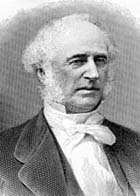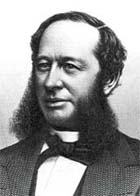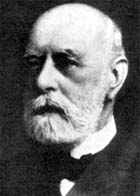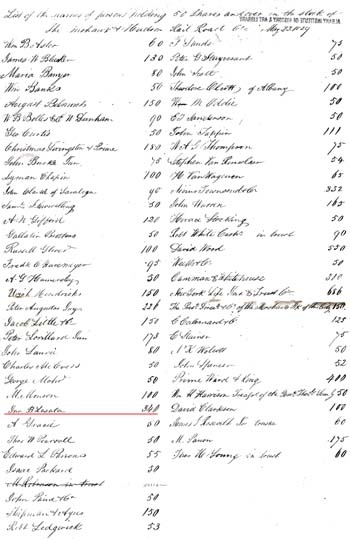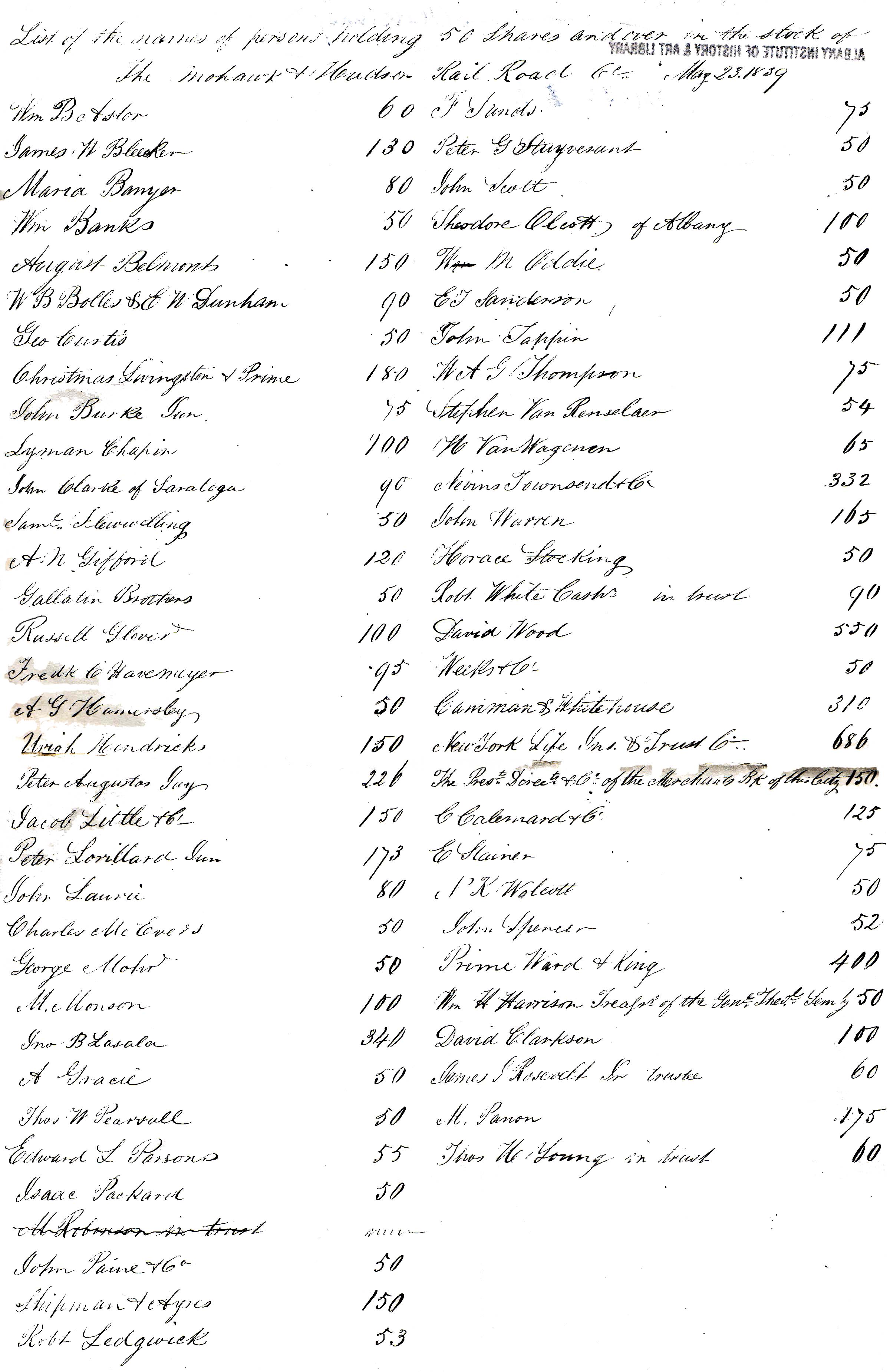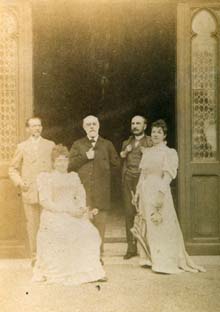
Gaiak
New York Uptown gangs, railroad tycoons and California gold miners. The basque hands that built America (1814-1851) (First part)
Versi?n original
Many have told about that almost unknown part of the American History. The first one, perhaps, was Herbert Asbury, then, bewitched by the new yorker prose, came Jorge Luis Borges and his tale about Monk Eastman. Later, when the twentieth century was diying, the yankees remembered that these things really happened and the historian Caleb Carr -the first member of Clio´s Guild who has researched these facts, maybe because, as Javier Marías has pointed recently, were too disgusting to be remembered- described more precisely the rise of New York as the capital city of world wide, global, capitalism in a couple of excellent novels, "The alienist" and "The angel of Darkness".
After the historian came, again, the writer. Edgar Lawrence Doctorow -a more than probable future Nobel prize- told us about the New York of year 1865, full, as well as Caleb Carr´s novels, of tycoons and profiteers who, supported by corrupt politicians surrounded by no less corrupt policemen, raised their huge -and more or less dirty- fortunes upon the misery of others; i.e. newspapers boys and girls, emigrants of all sorts or disabled Union soldiers who filled up the sidewalks of that unforgettable New York, cast in a "Gothic" crucible, described in "The waterworks".
Finally Martin Scorsese, perhaps remembering again the tales of Edith Wharton, the "mother" of all novels about the nineteenth century New York, gave us another lesson on that part of our History -now visual instead of literary- with his superb movie "Gangs of New York". There we learned again about New York Uptown gangs, reckless tycoons, emigrants, and their hideous counterpart, the "native" american working class, and the raising of the capital city of global capitalism. Fermín Lasala y Collado, duke of Mandas and relatives (circa 1880). Nephew of Juan Bautista Lasala. AGG-GAO DM 39,14
Of course no one of them has told nothing about the basque tycoons who, untired, not hungry or ill and with their pockets full of money, came to the United States to take part in that gloomy adventure. It is, perhaps, a good reason to tell here the story of Juan Bautista Lasala.
He was born during the last decades of the eigteenth century in the city of San Sebastian, a merchant emporium in the north coast of the Kingdom of Spain. His family, as many others established in that city, was dedicated to trade from sixteenth century. Maybe before, but there are no documents to support that hypothesis.
In the year 1814 he went to New York to follow there this career. His name changed to "John Baptist" and he became rapidly "a part of it". Indeed. As Amsterdam Vallon pointed, New York Uptown Gangs, the safe shelter that harboured the newcomer "John Baptist", have its own territory and rules, different from those that managed the miseries of Five Points. Then, nobody among the men who owned the power and the money in New York asked about his roman faith or his non-american origins. As we can imagine easily Uptown Gangs got an only God and country: money. And, as the documents of different archives told us, the stranger was a dedicated believer of that faith. Enough to be safe from any Bill Poole and his "nativist" rouges.
So, it is not surprising that New York Uptown gangsters saw his arrival to Manhattan with kind eyes. At last he was the golden key who will open for their merchandises the doors of that pearl of the Spanish Antilles, the colony of Cuba, and also to Puerto Rico, Juan Bautista´s last adress. The traces of four suits preserved in the Old Records section of the New York City Archives have something to say about that. Today we can read only two of them, suited before the High Court of Albany during the years 1825 and 1843. Both tell us how Juan Bautista Lasala made sucessful bussiness exporting and importing merchandise between Cuba and New York. Three XIXth century railroad tycoons. From right to left Cornelius and William Vanderbilt and Fermín Lasala y Collado, nephew of Juan Bautista Lasala and stockholder of Mohawk & Hudson railroad.
Probably that trade allowed him to acumulate enough money to became an investor and, subsequently, one of the businessmen who built up the first steam railroad of the empire state. If we read the list of the founders and stockholders of the Mohawk and Hudson railroad -the line that connected Albany, Buffalo and New York in "only" one day and an hour- that exists in the Mckinney Library, in the Albany Institute of Art and History, we discover there him -as "Jno B. Lasala"-, shoulder to shoulder with other New York Uptown gangs members as William B. Astor or Peter Augustus Jay. He owned 340 shares. Much more than the 60 hold by the Astors or the 226 property of P. A. Jay. The first trip of M&H railroad. Albany Institute of History&Art McKinney Library.
As it seems nothing could be denied to the pal who get capitals from Cuba and Europe -found in the avid hands of his brother Fermín (a powerful european tycoon, owner of flour and iron factories, ships, magazines, lands and houses from Madrid to Hamburg) or, among other basque bourgeois, inside the pockets of doctor Azcarate- to invest in that first steam railroad or in the infamous United States Bank that ruined more than one Cuba planter -but not to "brother" Fermín, firmly backed by the Rotschilds- when its scandalous financial manouvres forced the Federal Court to investigate and to "report for suit" against their managers and the directors of other 25 different american banks.
The United States National Archives -the NARA-, the New York City Old Records and the General Archive of Gipuzkoa -the homeprovince of Juan Bautista-, as well as the aforementioned Mackinney Library list, confirm that strange history about a railroad tycoon who came from the other side of the ocean to the nineteenth century America, to lay the foundations for global capitalism. They told us also about how the railroad fell into the claws of more powerful New York Uptown gangs -Vanderbilts, Morgans and Rockefellers- who seized the company and reduced the Lasalas, as well as the Astors and Jays, and the whole number of founders except, perhaps, a Chapin and a Clarke, to mere stockholders of the new and greater company, the New York Central and Hudson River.
Then, laying aside the obituary dedicated to the basque tycoon in the New York Times pages, the only thing we can learn about the Lasalas in these documents is, surprisingly, that a little part of the clan, as Amsterdam Vallon or Jenny Everdeane, came to built America with their own naked hands and not a dime in their pockets. They, as many others, victims of that sad condition, were sent to the West, to California. But we talk about that in a day still to come, later. List of stockholders of Mohawk and Hudson Railroad Company including a "John Baptist Lasala". Source: Institute of Art and History of Albany, Mckinney Library . EM 672/29. (click to make it bigger)
Link:
http://www.nycrrmuseum.org
http://www.nyt.ulib.org Related articles Menu GAIAK Inicio > EM 250 > Gaiak -->
2004/04/16-23


